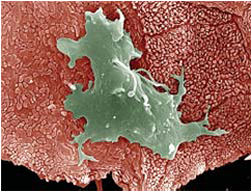Trichomoniasis-causing organism is sequenced
- More than 2 years ago
Scientists have taken a first read of the genetic sequence of the organism responsible for a sexually transmitted infection called trichomoniasis.

This disease is caused by the single-celled parasite Trichomonas vaginalis. Symptoms of infection include discharges from the penis or vagina and burning and itching of the genitals.
Because the infection affects about 170 million people worldwide and can increase susceptibility to other sexually transmitted infections, such as with the AIDS virus, scientists worldwide saw a need for learning T. vaginalis’ genetic code, says Jane Carlton of New York University School of Medicine. She and other researchers from 10 countries collaborated to sequence a draft of the genome.
The scientists used a method called whole-genome-shotgun sequencing. They cut the organism’s six chromosomes into fragments, sequenced just the fragment ends, and then used a computer program to virtually patch together these bits.
By poring over this new information, the researchers identified several genes probably involved in the organism’s ability to adhere to the vaginal wall and fight off a person’s immune system, the team reports in the Jan. 12 Science. Crafting drugs that target proteins from these genes could offer new ways to fight the infection, Carlton says.